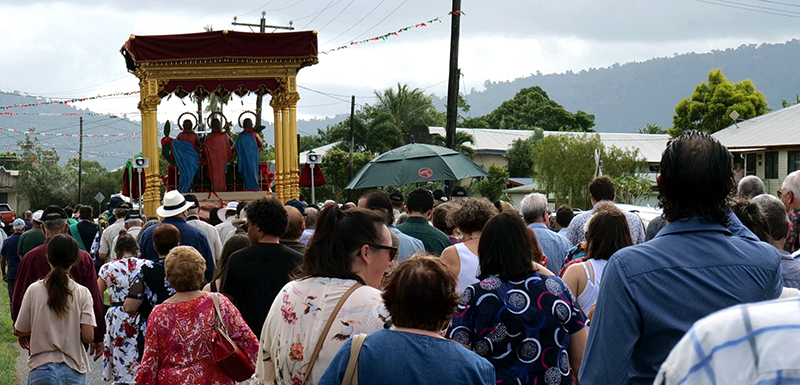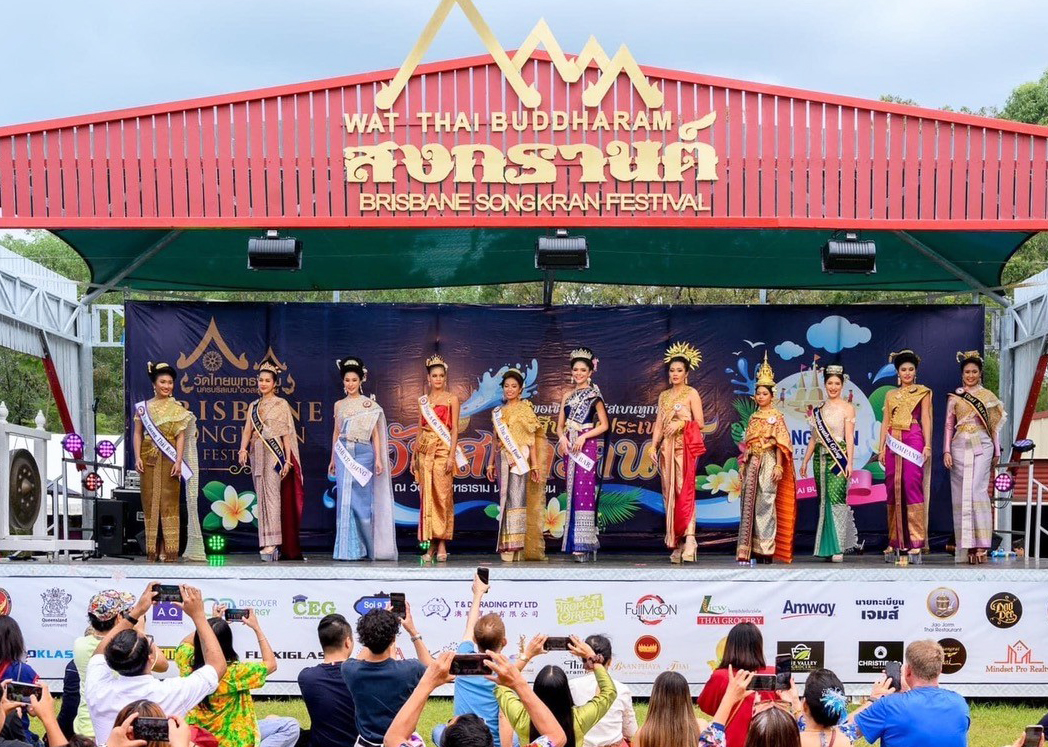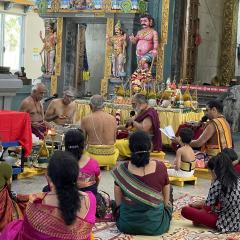What is Queensland’s religious history? What stories and landmarks are peculiar to Queensland? And what are the characteristics of contemporary religious and spiritual practices, experiences, and movements?

These are questions that University of Queensland researchers and affiliated contributors aim to answer using the Queensland Atlas of Religion - an online archive of stories about people, landmarks, and social actions associated with religious communities.
Recently launched, this ambitious project was developed and funded in partnership with the State Library of Queensland and the Australian Research Council to document and interpret the diversity of religion and religious practices in Queensland’s past and present.
Co-led by Associate Professor Adam Bowles and Associate Professor Geoff Ginn from UQ’s School of Historical and Philosophical Inquiry, the public reference website is the first major scholarly treatment of historical and contemporary religious life in the Queensland setting.
Using an inter-disciplinary approach, it engaged contributors and affiliates from the university sector, community-based researchers and independent scholars, graduate students, and participants from a wide range of places and traditions in Queensland.
Religion can be a contentious topic, and according to the census data, Australia is becoming less religious – although Dr Bowles said this data fails to capture the rise in unstructured belief systems.

“Some people question the value of religion and are suspicious of its public roles, and people often perceive religious adherents, religious communities, and religious ideas as being the source of conflict,” he said.
“The aim of this project is to challenge such views and understand our community better.
“We wanted to understand what religions meant to their followers, and how religious practices gave form and purpose to everyday life in ways that are often overlooked or are poorly understood.”
Dr Bowles said religious literacy is a necessary, if often neglected, attribute of a complex multicultural society.
“When we lack an understanding of religious practice and the values of religious communities, we can perceive threats when there are in fact none.

“By starting with telling the stories of people and communities, we introduce the normative and historical dimensions through their relevance to actual Queenslanders,” he said.
Digital publication via a bespoke website was an important dimension of the project.
Dr Ginn said they wanted the research to be readily available to the wider public, which led to a public reference website rather than a collection of essays published as a book.
“We hoped that it would be very widely accessible in this format, and thus much more generally used, helping in a genuine way to enhance religious literacy in Queensland and Australia,” he said.
The Queensland Atlas of Religion is an ongoing project, where new stories will be added over time, including interpretive essays, oral histories, visual snapshots, and story maps.
“We want to sketch a cumulative picture of the diversity of religion in Queensland; describing and analysing Indigenous, Abrahamic, Asian and African ways of being religious in the Queensland context, while acknowledging intersections, fuzzy boundaries, and divergences,” Dr Bowles said.

The project captures voices and experiences to comprehensively document and analyse the contribution that religion has made to Queensland’s social fabric, while also tackling interconnected issues regarding migration, identity, social participation, and the significance of place.
Its creators hope it will become the go-to reference platform for educators, politicians, policy makers, journalists, researchers, and others seeking to better understand the place of religion and religious communities in Queensland.



